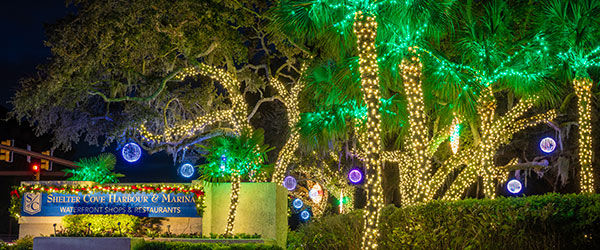A Beginner's Guide to Safer Paddling
- Shelter Cove

- Oct 14, 2018
- 2 min read
Updated: Apr 1, 2024

Here at Shelter Cove Harbour & Marina you can get out on the water with kayak and canoe rentals. It's the best way to get up close and personal with Hilton Head Island's waterways! But it's important you take the necessary precautions to ensure a safe and exciting trip out on the water. Learn more about safe paddling from the SafeBoatingCampaign.com:

1. Always wear your life jacket Wear it like a pro: The first sign of a rookie paddler is someone who isn't wearing a life jacket. Experienced paddlers wear life jackets whenever they're on the water. Make it fit: Adjust your life jacket so that it's snug and comfortable. It should not lift up when pulled by the shoulders. Modern life jackets come in all sizes, with models for children, women and men.

2. Know your limits Be honest with yourself: Good paddlers know their limits. If you don't feel comfortable in a given set of conditions, return to shore. The right boat for the conditions: Most kayak, canoes and SUPs are designed for use on protected waters and moderate currents. Specialized boats are used for whitewater, surf and exposed lakes or ocean. Know the capabilities of your craft. These venues require additional training. Explore your limits safely: Improving your skills is one of the joys of paddling. Practice in safe conditions with instructors or expert paddlers to expand your personal performance envelope. Impairment = accidents: Do not go paddling if you should not be driving. Coast Guard and state BUI laws apply to all vessels, which includes recreational canoes, kayaks and SUPs.

3. Carry the paddling essentials Safety: Always carry drinking water. Keep signaling devices (whistle, mirror, flares) in a pocket of your life jacket. Sit-inside kayakers should carry a paddle float and pump. Communications: A handheld VHF radio allows you to communicate with the Coast Guard and commercial boat traffic. Use channel 16 for emergencies. A Personal Locator Beacon (PLB) will relay your precise location to rescue agencies if you're in distress. Carry a cell phone in a waterproof case (you can get one at the Marina Ship's store), and always be sure to tell a friend before you go. Comfort: Carry extra layers of clothing in a waterproof "dry bag". For longer outings, bring energy bard or a lunch.

4. Plan for changing weather conditions Treat the forecast as the best case: When the forecast calls for ideal paddling weather, it will probably be a beautiful day- just don't count on it. Don't forget to check tides or river levels, and note the time the sun will rise and set. Prepare for the worst case: Be aware of how changing weather affects paddling, and plan accordingly. For canoeists and kayakers, air temperature is less important than wind speed and direction. And while rain can be a nuisance, lightening is dangerous. Have an exit strategy at all times. If a fast-moving thunderstorm appears, where is the nearest safe landing? Pay attention: Scan the horizon for dark clouds, and be aware of changing temperatures and wind directions, which often precede a squall or thunderstorm. Don't wait for bad weather. If you sense a change for the worse, get off the water right away. Learn more here:





